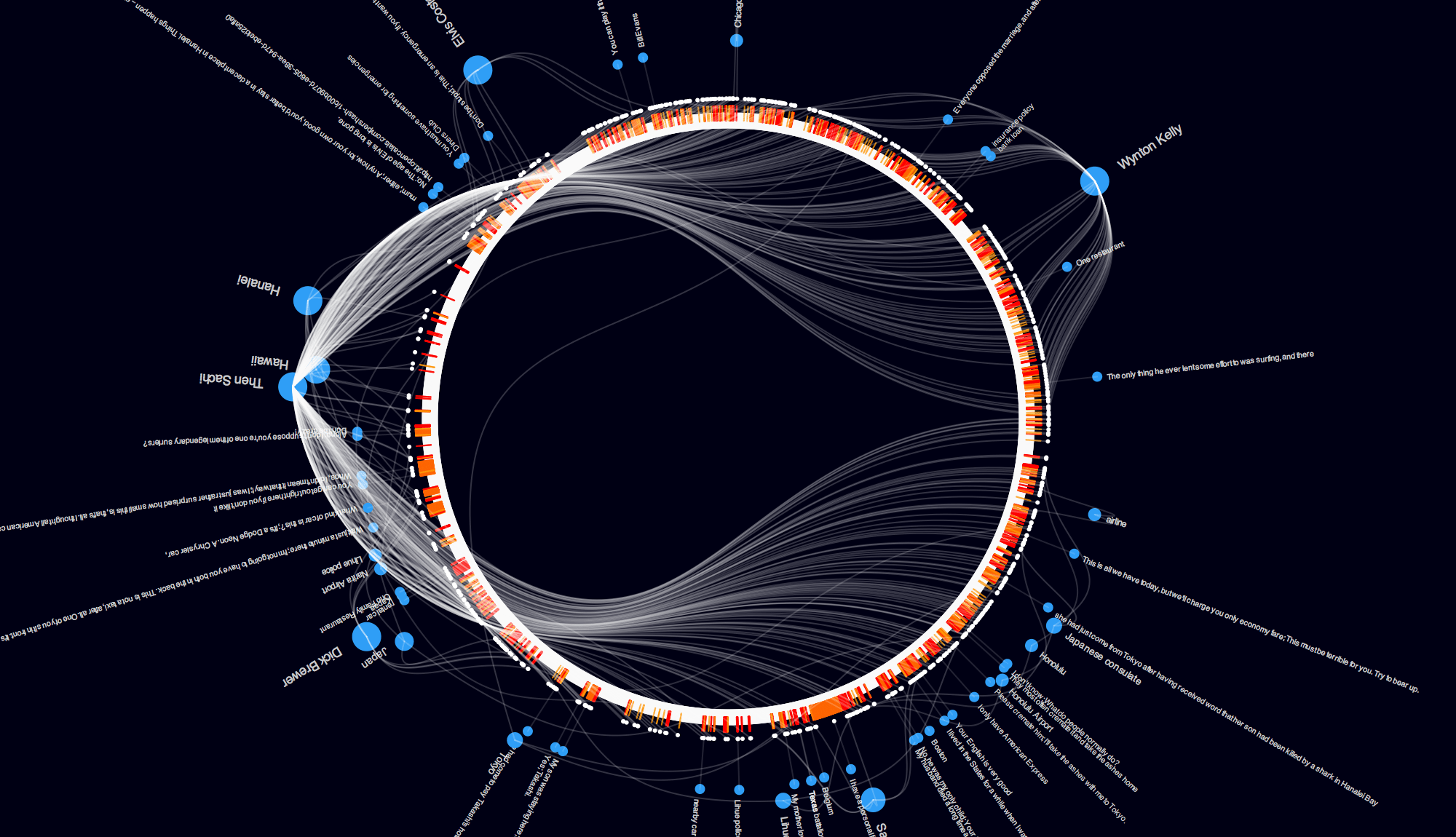Por que sua empresa precisa de taxonomia?
Uma taxonomia para empresas. Essa é a proposta.
Uma taxonomia, de forma bem simples, é um esquema de categorização. Ele foi criado para organizar em categorias segundo um certo esquema.

Então, por que é importante criar uma taxonomia para a minha empresa?
Novamente, de forma bem simples, a criação de uma taxonomia empresarial pode ajudar todas as áreas de sua empresa, mas principalmente as relacionadas ao Marketing e Comercial.
Eu tenho a experiência do uso de um esquema de categorias, uma taxonomia, para organizar um projeto de gestão de dados, um para documentar a criação de personas e outra vez usei taxonomia no trabalho de inbound marketing.
Os problemas da sua empresa e soluções taxonômicas
Optei por organizar a minha pesquisa em dois momentos:
- Descrever os problemas que levam a necessidade de uma taxonomia;
- Dar sugestões de soluções para cada um dos problemas.
E no final quero que você que ler este artigo até o final saiba resolver algum desses problemas (e outros que encontrar) com a criação de uma taxonomia para empresas.
Vamos então, aos problemas…
Excesso de dados, vazio informacional
Todos nós geramos mais dados em um dia do que em décadas, décadas atrás.
Ao longo das últimas décadas, a quantidade de dados gerados tem crescido de forma exponencial.O surgimento da Internet aumentou de forma abrupta a quantidade de dados produzidos, e a popularização da Internet das coisas fez sairmos da era do terabyte para o petabyte[1][2]. Em 2015, entramos na era do zetabytes[3], e atualmente geramos mais de 2,5 quintilhões de bytes diariamente[4].
Wikipedia
Tenho certeza que na sua empresa você encontra um cenário bem parecido com esse: dezenas, centenas de planilhas, documentos, arquivos com dados de todas as fontes e formas. Tudo isso espalhado em computadores, na rede, em sistemas diferentes. Esse é o vazio informacional.
O problema é que para gerar alguma informação dessa quantidade de dados é preciso um esforço gigantesco com pouca garantia de sucesso.
Falta de padrão e nomenclatura em documentos
Usando o mesmo cenário acima posso afirmar que esses mesmos documentos estão dispersos em arquivos de texto, formatos proprietários como os do Office, PDFs e muitos outros. Todos incompatíveis entre si.
Além disso a nomenclatura usada só deixa as coisas mais confusas. Coisas como “documento-financeiro-02″ e “finanças doc-02082019” usados para o mesmo conteúdo ou até “relatório-versao-01”, “relatorio_v03”, que eram para ser documentos sequenciais.
Isso dificulta muito usar sistemas para lidar com esses dados de forma automatizada.
Recursos de busca limitados
Dados geram informação. Informação pode gerar conhecimento. Conhecimento transforma a sua empresa. Mas como fazer esse processo acontecer se você não consegue achar a informação que precisa, nos dados que tem?
A confusão criada por falta de padronização e organização dos dados gera um cenário de limitação na procura por informação nesses mesmos dados.
Desconhecimento informacional
Informação é novo ouro.
Desconhecer quais informações você tem escondidas nos seus computadores é o mesmo que ser pobre e viver sobre um terreno cheio de tesouros.
A falta de conhecimento informacional mata oportunidades de negócios.
Ausência de terminologia unificada entre áreas
No departamento comercial, na planilha de resultados do trimestre lemos uma coluna chamada clientes, uma vendas e outra lucro.
No Marketing uma planilha também chamada de resultados do trimestre, temos uma coluna chamada de inscritos, uma vendas e outra taxa de vendas.
As duas planilhas tem o mesmo nome, são relacionadas ao mesmo período, mas usam termos completamente diferentes para os mesmos dados.
A falta de padrão para os termos usados entre departamentos vai gerar problemas sérios na hora de unificar os dados para gerar informação para toda a empresa.
Cultura organizacional
A cultura da sua organização é o maior obstáculo que vai precisar transpor para implementar qualquer processo que muda o dia-a-dia dela.
Seja qual for a mudança, vai ter que mudar a cultura. Pior ainda se essa mudança for estrutural, radical. Quanto mais inovadora mais vai ter que lidar com resistência de quem já acostumou com o atual modo de fazer.
Uma mudança de cultura vai lhe ajudar a se beneficiar de dados, informação, usando técnicas como taxonomias.
Falta de governança
Um cenário muito comum em empresas é a falta de governança, principalmente relacionada a dados.
Governança de Dados é um sistema que permite a tomada de decisões quanto o acesso e o uso de determinadas informações. Sendo executado por um modelo usa métodos que definem quais circunstancias esse acesso pode ser requerido.
Planejar e executar a correta governança vai evitar problemas com agilidade e confiança, relacionadas a dados e informações.
Estrutura aberta e alterada por todos os usuários
Esse item está bem próximo do anterior. A falta de Governança e uma estrutura demasiadamente aberta e sem controle de acesso, permissão de escrita, geram os mesmos problemas: falta de confiabilidade nas informações.
Se os seus dados podem ser alterados e tirados “do lugar” por qualquer pessoa, a qualquer momento, como saber se elas ainda são confiáveis?
Descentralização de informações
Lembrando o que eu mesmo disse lá em cima, neste mesmo post:
dezenas, centenas de planilhas, documentos, arquivos com dados de todas as fontes e formas. Tudo isso espalhado em computadores, na rede, em sistemas diferentes.
Esse é o cenário da sua empresa?
Mudanças na empresa – Fusões e Aquisições
Mais complicado que uma empresa que tem vários silos de informação, ambientes separados entre site é quando duas empresas, com dois modelos completamente diferentes se juntam.
Ai não tem jeito: ou uma das duas absorve a outra estrutura ou é preciso planejamento e um trabalho de médio prazo para organizar e normatizar suas informações.

Benefícios da criação de taxonomias para a sua empresa
Eu consegui elencar 10 problemas relacionados a falta de um esquema de categorização, ou seja, de uma taxonomia para sua empresa.
Agora vou tentar fazer o trabalho mais complexo: explicar XX benefícios do uso de taxonomias para a sua organização. Vamos a elas?
Estrutura e organiza o conhecimento das organizações
O uso de uma taxonomia na sua organização ajuda a estruturar e organizar o conhecimento de forma que todos os interessados possam ter o acesso necessário, na hora que precisem, aumentando a eficiência.
Uma taxonomia, por ser um maneira organizada de lidar com a necessidade de categorização dos dados e da informação, é uma das maneiras mais simples de resolver este problema.
Melhora a eficiência organizacional e baixa custos
Os custos relacionados a falta de organização da informação na sua empresa precisam ser calculados.
O seu departamento financeiro iria se assustar com duas métricas: horas/funcionário desperdiçadas com captura, tratamento e categorização de dados e baixo retorno das informações usadas, por falta de qualidade das mesmas.
Taxonomias bem estruturadas aumentam a eficiência organizacional e reduz custos por aumentar a qualidade das informações, evitando erros e diminuindo os custos relacionados ao uso dos dados nos negócios.
Estimula a Inovação
Criar uma taxonomia para empresas estimula a inovação pelo simples fato da clareza que traz aos gestores de onde encontrar a informação correta, sua relação com outros dados, e o que significa cada pedaço dessa informação.
Inovação é a ação ou o ato de inovar, ou seja, modificando antigos costumes, manias, legislações, processos e etc; efeito de renovação ou criação de uma novidade.
Modificar costumes e processos. Se você quiser fazer isso vai precisar saber muito bem onde precisa fazer as mudanças, conhecendo o cenário atual com clareza.
Para fazer isso, pode contar com a ajuda de quantas taxonomias sejam necessárias.
Compartilhamento através de Busca e Navegação
Dados geram informação.
Informação gera conhecimento.
Conhecimento transforma a sua empresa.
Para organizar e qualificar o compartilhamento de informações através de ferramentas que permitem o acesso rápido a elas você pode usar tanto taxonomias quanto ontologias.
Gestão do Conhecimento ou Memória Organizacional
Lembra do que eu disse acima: Conhecimento transforma a sua empresa.
Para gerar conhecimento e mantê-lo acessível e vivo é preciso fazer sua gestão. Um processo de gestão de conhecimento ou a criação de uma memória organizacional só é possível com a correta organização, categorização e atualização da informação que gerou esse conhecimento.
E adivinha quem vai lhe ajudar a fazer isso? Exatamente: uma taxonomia para sua empresa!
Reuso da Informação
Você cria uma taxonomia para sua empresa. Organiza seus dados e as informações geradas. Cria um sistema que facilita a busca e o uso dessas informações, gerando conhecimento através dessas informações.
Está ai descrito o processo de uso da informação através da criação de uma taxonomia na sua empresa.
Reduz termos duplicados
A ausência de terminologia unificada entre as áreas da sua empresa gera um problema sério: o uso de dois ou mais termos para a mesma coisa.
O exemplo que dei anteriormente, a confusão entre departamento comercial e marketing, foi retirado de um caso real.
Nesta empresa o uso de dois nomes para a mesma métrica causou um prejuízo grande pela falta de alinhamento entre os departamentos, prejudicando uma ação conjunta entre eles.
Se houvesse uma taxonomia que normatizasse esses termos, isso poderia ter sido evitado.
Reflete as necessidade de informação
Um dos efeitos de criamos uma id=”urn:enhancement-52″ class=”textannotation disambiguated wl-thing” itemid=”http://data.wordlift.io/wl01797/entity/taxonomia”>taxonomia dentro de uma organização é ter uma visão bem clara dos dados que temos e principalmente quando não temos os dados.
Quando começamos a mapear os dados e as Possibilita uma visão sistêmica Uma visão sistêmica, é exatamente isso que é criado com o processo que descrevi acima. Com o uso de uma taxonomia a sua organização consegue dar suporte aos processos com maior compreensão do todo. Inovação. Futuro. Novas tecnologias como o Machine Learning, Chatbots lincement-1″ class=”textannotation”>dam com um grande volume de dados que precisam estar organizados e bem estruturados para funcionarem na sua máxima potência. Criar graphos de conhecimento, ontologias e taxonomias para os dados usados por eles vai estruturar e facilitar o trabalho dos desenvolvedores dessas tecnologias na sua empresa. Agora que eu convenci você que sua empresa precisa de taxonomia (espero que tenha conseguido) preciso te mostrar como criar uma taxonomia. Para isso eu vou lhe indicar um curso: Taxonomia Corporativa e Glossário de Negócios da Renata Land. Como usar uma taxonomia para resolver os problemas da sua empresa?Machine learning, Chatbot
Perguntas Frequentes





Publicar comentário